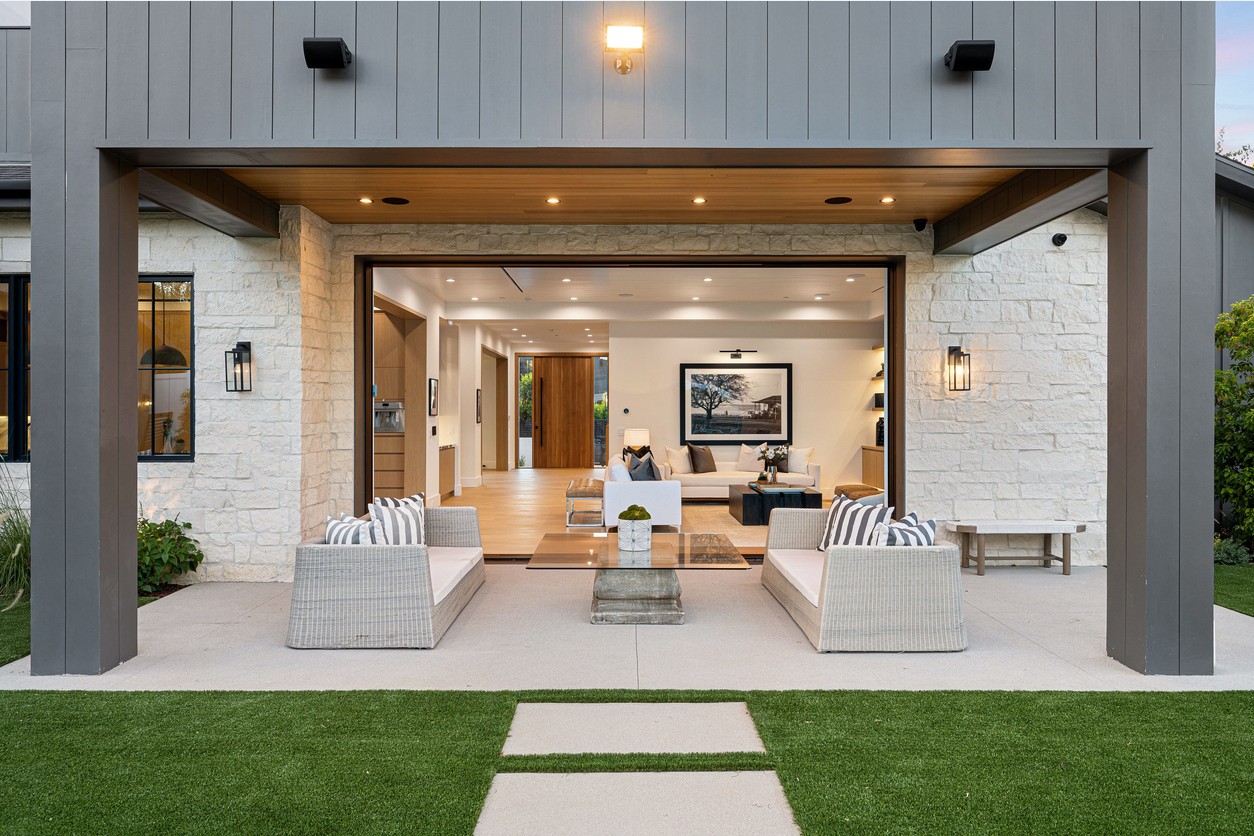High-end homes today are designed with a seamless flow between indoor and outdoor spaces, creating open, natural, and connected environments. Large glass walls, retractable doors, and extended patios allow sunlight, fresh air, and scenic views to become part of everyday living. Outdoor areas are often treated as home extensions, complete with kitchens, fire pits, and lounge spaces that enhance comfort and functionality. This blending of spaces offers a lifestyle that balances luxury with relaxation, making homes feel elegant and inviting.
Design trends highlight how homeowners value interiors and the surrounding landscape. In scenic locations, outdoor spaces are thoughtfully integrated to maximize enjoyment of the environment. For example, Blue Ridge GA real estate agents Nathan Fitts & Team often note that luxury properties in the region emphasize these features, ensuring homes fully embrace their natural surroundings. This approach reflects a broader movement toward living spaces harmonizing with nature while enhancing everyday comfort.
Biophilic Design: Integrating Natural Elements
Biophilic design has become a driving force in luxury real estate, as it centers on incorporating nature’s patterns, materials, and visual cues directly into living spaces. Vertical gardens, calming indoor water features, and sunlight-drenched atriums can visibly lift moods, reduce stress, and improve cognitive function. Luxury properties that successfully employ biophilic principles create inviting interiors infused with the tranquility and vibrance of the natural world.
Utilizing Natural Materials and Textures
Natural materials evoke a sense of warmth and timelessness in high-end interiors. Customized flooring from reclaimed wood, richly veined stone countertops, and bamboo accents infuse rooms with character that synthetic alternatives cannot replicate. These materials, chosen for their tactile qualities and organic patterns, help establish deeper connections to the surrounding landscape. Interior designers often select regionally sourced stone or timber to further ground luxury homes in their native environments while minimizing the ecological footprint.
Incorporating Indoor Gardens and Green Walls
The rise of indoor gardens and dramatic green walls speaks to growing health, aesthetics, and sustainability priorities. These verdant installations purify indoor air and create a living work of art, blurring boundaries between built environments and nature. A notable example is the Featherston House in Melbourne, where an expansive garden grows straight from the foundation, conjuring the ambiance of an indoor forest. Such features are especially popular in urban estates, where outdoor space may be limited and every square foot of greenery counts toward promoting wellness.
Maximizing Natural Light with Large Windows
Floor-to-ceiling windows, glass sliding doors, and clerestory windows exemplify the luxury market’s shift toward bright, open interiors. Maximizing daylight expands sightlines, showcases scenic vistas, and helps regulate circadian rhythms. Ample natural light can be transformative, giving rooms an airy, inviting atmosphere while reducing the need for artificial lighting.
Creating Seamless Indoor-Outdoor Transitions
Effective luxury design minimizes visual and physical barriers between interior and exterior spaces. Retractable glass walls, consistent flooring, and harmonious color palettes ensure that living areas flow intuitively into patios, decks, and gardens. The result is a cohesive living environment that fosters connection—owners can entertain easily, step effortlessly from indoor kitchens to alfresco dining areas, or enjoy uninterrupted views, regardless of the season.
Adding Water Features for Tranquility
Water features, including reflecting pools, indoor fountains, and wall cascades, are prized for their calming presence and meditative soundscape. These installations transform living rooms, entryways, and courtyards into tranquil sanctuaries. They act as both an architectural statement and a wellness feature, creating moments of pause and reflection that elevate daily life. Water features in luxury homes often draw inspiration from luxury resorts, cultivating an atmosphere of perpetual relaxation and escape.
Designing Outdoor Living Spaces
True luxury extends beyond the thresholds of the home. Exquisitely furnished outdoor areas—outfitted with weather-resistant sofas, fireplaces, kitchens, and entertainment systems—deliver the whole resort experience in one’s private retreat. These spaces are tailored to relaxation, socializing, or contemplating nature, extending the usable living area and increasing property value. Thoughtful landscaping further amplifies ambiance, offering serenity whether gazing at mountain ridges or manicured gardens.
Final Reflection
Luxury home design increasingly revolves around harmony with nature, where architecture and environment complement one another. From natural materials and biophilic elements to expansive outdoor living areas, these features redefine comfort and elegance. By seamlessly blending indoor and outdoor spaces, modern residences foster beauty and relaxation and a lifestyle deeply connected to the natural world.
